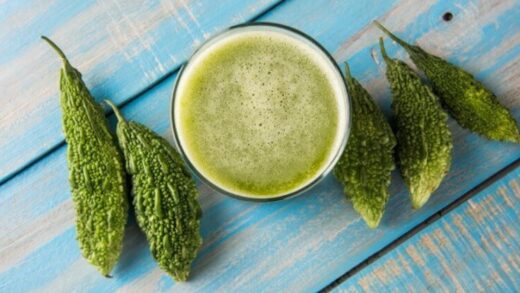Table of contents:
Berries, with their vibrant hues of red, white, and blue, stand not only as colorful additions to our plates but also as nutritional powerhouses that play a crucial role in our overall wellness. From the antioxidant-rich depths of blueberries to the tangy sweetness of strawberries and the delicate flavors of white currants, these fruits are celebrated staples in American cuisine.

History and Cultural Significance of Berries
Native American use of various berries
Native Americans across North America have long revered berries not only for their taste but also for their medicinal properties and spiritual significance. Tribes such as the Cherokee, Iroquois, and Navajo utilized berries like strawberries, raspberries, and blueberries in traditional diets and healing practices. They harvested wild berries, dried them for preservation, and used them in stews, pemmican (a type of dried meat), and as flavorings for other foods. Berries held cultural importance, symbolizing renewal, vitality, and the bounty of nature.
Cultivation history of berries in North America

The cultivation of berries in North America began with European settlers who recognized the potential of native species. Here’s a brief timeline of berry cultivation in North America:
Early 17th Century:
🍓 Strawberries are first domesticated and quickly become popular in gardens for their sweetness and versatility in desserts and preserves.
18th Century:
🔴 Raspberries are cultivated for their rich flavor and ability to thrive in various climates, contributing to expanding berry cultivation in North America.
Early 20th Century:
🫐 Blueberries, already a staple in Native American diets, transition to commercial cultivation, leading to the development of larger, sweeter varieties like the highbush blueberry.
Throughout History:
⚪ White currants, though less common, are also cultivated alongside their red counterparts, adding diversity to culinary offerings and enriching the palette of berry flavors available.
The rise of these berries in the global market
The global popularity of American berries soared in the 19th and 20th centuries, thanks to improved transportation and preservation methods. Blueberries, in particular, gained international fame for their health benefits, leading to increased cultivation in Europe and Asia. Strawberries, raspberries, and currants also became favorites worldwide, finding their way into a variety of culinary traditions.
Today, these berries are enjoyed fresh and are key ingredients in processed foods, beverages, and dietary supplements. Their export has given a significant boost to the American agricultural economy, cementing their status as beloved global superfoods.
All about berries
Red berries
Red berries, widely celebrated for their vibrant color and sweet-tart flavors, include a variety of types that are both delicious and nutritionally beneficial. Here are some common types of red berries:
1. Strawberry:
Strawberries are unique because their seeds are on the outside, with each fruit bearing about 200 seeds. They are an excellent source of vitamin C and manganese, and their bright red color is due to high levels of anthocyanins, powerful antioxidants that help fight inflammation.
2. Raspberry:
Raspberries are rich in dietary fiber, vitamins C and K, and are known for their high levels of ellagic acid, a compound with anti-cancer properties. Interestingly, each raspberry is composed of about 100 tiny drupelets, each containing its own seed.
3. Goji Berry/Wolfberry:
Goji berries, also known as wolfberries, have been used in traditional Chinese medicine for over 2,000 years for their purported benefits in enhancing immune function and improving eyesight. These berries are packed with vitamins A and C, iron, and antioxidants, making them a popular superfood in modern diets.
4. Juneberry:
Juneberries, also known as serviceberries, have a sweet, nutty flavor similar to blueberries and are often used in jams, pies, and other desserts. They are rich in fiber, protein, and antioxidants, and were a staple food for many Native American tribes, who dried them for winter sustenance.
5. Cranberry:
Cranberries are well-known for their ability to help prevent urinary tract infections, thanks to their high levels of proanthocyanidins, which inhibit bacteria from sticking to the urinary tract walls. These tart berries are also packed with vitamin C and fiber, and they hold a traditional place in Thanksgiving feasts across North America.
White berries
White berries, though less common than their red and blue counterparts, include a variety of types that can be found in nature. Here are some notable examples:
1. White Currants (Ribes rubrum)
White currants, a natural mutation of red currants, are prized for their delicate, translucent appearance and sweet, tangy flavor, which is milder than their red and black counterparts. Rich in vitamin C, vitamin K, and dietary fiber, they offer numerous health benefits while also being versatile in culinary applications, from fresh eating to jams and jellies.
2. White Strawberries (Pineberries)
Pineberries, a unique hybrid between the Chilean and Virginia strawberry, are renowned for their creamy white skin dotted with red seeds and their distinctive taste, which blends the flavors of strawberries and pineapples. These berries are naturally occurring through cross-pollination, not genetically modified, and are known for their delicate texture and high maintenance growing conditions. Despite being discovered over a decade ago, pineberries remain a novelty in the produce world, steadily gaining popularity for their tropical flavor and versatility in both sweet and savory dishes.
3. White Mulberries (Morus alba)
White mulberries are not only a nutritious snack rich in vitamin C, iron, and fiber, but they also possess potential health benefits, such as improving blood sugar management and reducing cholesterol levels. Traditionally used in natural medicine, recent studies have shown that white mulberry extracts might even slow the growth of certain cancer cells. Cultivated worldwide, these berries are enjoyed fresh, dried, or as part of teas and supplements.
4. Snowberries (Symphoricarpos albus)
Snowberry is notable for its waxy, snow-white berries that persist through winter, making it a striking feature in the landscape during the colder months. Native to the Pacific Northwest and naturalized in parts of eastern North America, snowberry thrives in various habitats from woodlands to streambanks. While its berries are toxic to humans if consumed in large quantities, they are valuable to wildlife, attracting birds and mammals, and historically used by Native Americans for medicinal purposes, such as treating skin conditions and digestive ailments.
5. White Elderberries (Sambucus nigra var. caerulea)
White elderberries, or Australian Elder, are distinct for their small size and delicate appearance, resembling currants or gooseberries when ripe. Native to Australia, these berries grow on low bushes and are appreciated for their juiciness and sweet-tart flavor profile, which includes notes of gooseberry and white currant. While less common than their black or blue counterparts, White elderberries are valued for their nutritional content, particularly high in vitamins A and C, and are used in various sweet applications such as syrups, jams, and desserts.
6. White Blueberries ((Vaccinium myrtillus var. leucocarpum)
White blueberries are a rare variant of the common blueberry, notable for their lack of pigmentation, which means they don’t stain your mouth when eaten. Found in various regions of Latvia, these berries have the same size, taste, and nutritional benefits as regular blueberries. Genetic studies have shown that white blueberries growing in different areas are genetically distinct, but within a single area, they spread vegetatively from one plant.
Blue berries
1. Blueberries (Vaccinium spp.)
Blueberries are rich in anthocyanins, plant compounds that give them their blue color and powerful antioxidant properties, helping to protect against heart disease and cancer. They are an excellent source of vitamins C and K, and provide essential minerals like iron, calcium, and magnesium, which contribute to bone health. Consuming blueberries regularly can improve mental health by slowing cognitive decline and enhancing short-term memory. Additionally, their high fiber content aids digestion, supports weight loss, and helps maintain healthy blood pressure and glucose levels.
Types of blueberries:
1.1 Highbush Blueberries (Vaccinium corymbosum):
- The most common type cultivated in the United States, particularly in states like Michigan, New Jersey, and North Carolina.
- They are larger and often sweeter compared to other varieties.
1.2 Lowbush Blueberries (Vaccinium angustifolium):
- Also known as wild blueberries, found in regions like Maine and Canada.
- Smaller, more intense in flavor, and often used in processed foods.
1.3 Rabbiteye Blueberries (Vaccinium virgatum):
- Native to the southeastern United States, thriving in states like Georgia and Florida.
- Heat-tolerant and well-suited for warmer climates.
2. Acai Berry (Euterpe oleracea Martius)
Acai berries are small, dark purple fruits native to the Amazon rainforest. They are renowned for their high antioxidant content, particularly anthocyanins, which help combat oxidative stress and inflammation. Additionally, acai berries are rich in healthy fats, fiber, and vitamins A, C, and E, contributing to improved heart health, digestion, and skin health.
3. Huckleberries (Vaccinium membranaceum)
Huckleberries, found in the wild in the Pacific Northwest and Rocky Mountains, are similar in appearance to blueberries but are smaller and more tart. These berries are highly nutritious, rich in antioxidants, vitamins A, B, and C, and contain compounds like anthocyanins and polyphenols that support heart health and immune function. Additionally, huckleberries are often used in making jams, pies, and syrups due to their unique flavor and nutritional benefits.
4. Saskatoon Berries (Amelanchier alnifolia)
Although not a true blueberry, they resemble blueberries in appearance and taste. Saskatoon berries, also known as serviceberries or juneberries, are nutrient-dense fruits that grow on shrubs or small trees, native to North America – particularly found in the western and northern regions. Rich in vitamins A, B6, C, E, and numerous minerals, they contain twice the amount of vitamin C and seven times the amount of calcium found in blueberries. These berries, which have a sweet and tangy flavor, are packed with antioxidants like anthocyanins, offering health benefits such as anti-inflammatory, anticancer, and antidiabetic effects.
Health Benefits of Berries

Berries are among the healthiest foods on the planet, known for their delicious taste and impressive nutritional profile. Incorporating berries into your diet can be a flavorful and effective way to boost overall health.
Here are 11 reasons to include berries in your diet:
- Loaded with antioxidants: Berries are rich in antioxidants like anthocyanins, ellagic acid, and resveratrol, which help neutralize harmful free radicals and reduce disease risk.
- May help improve blood sugar and insulin response: Studies show that berries can improve insulin sensitivity and reduce blood sugar levels, benefiting both healthy individuals and those with insulin resistance.
- High in fiber: The high fiber content in berries promotes satiety, aids digestion, and helps manage weight by reducing calorie absorption.
- Provide many nutrients: Berries are low in calories but high in essential nutrients, including vitamin C, manganese, and folate, making them a nutrient-dense food choice.
- Help fight inflammation: The anti-inflammatory properties of berries help reduce chronic inflammation, which is linked to various diseases such as diabetes, heart disease, and obesity.
- May help lower cholesterol levels: Berries have been shown to lower LDL cholesterol levels and prevent it from becoming oxidized, reducing the risk of heart disease.
- May be good for your skin: Antioxidants in berries, particularly ellagic acid, help protect collagen in the skin, reducing signs of aging and wrinkles.
- May help protect against cancer: Compounds in berries may reduce the risk of various cancers by inhibiting tumor growth and protecting cells from damage.
- Can be enjoyed on nearly all types of diets: Berries are versatile and can fit into low-carb, ketogenic, paleo, Mediterranean, vegetarian, and vegan diets.
- May help keep your arteries healthy: Berries improve endothelial function, which is crucial for maintaining healthy blood pressure and preventing heart disease.
- Delicious alone or in healthy recipes: Berries are naturally sweet and can be enjoyed on their own or as part of various healthy dishes, adding flavor and nutrition.
America’s Favorite Berries – What exactly are they?

Strawberries take the crown as America’s favorite berry, boasting a generous 9.8 pounds per person in 2016. Loved for their juicy sweetness and versatility, they top the charts in both fresh and culinary uses. Cranberries follow closely behind with 3 pounds per person, fueled by the popularity of cranberry juice. Blueberries round out the top three with 2.4 pounds per person, enjoying a remarkable rise in popularity for their antioxidants and delicious flavor. These berries not only tantalize taste buds but also pack a punch in nutritional benefits, making them beloved staples across the country.

- The Berry Bowl
Açaí blended with banana, strawberries, blueberries, honey, and almond milk – topped with granola, banana, goji berries, and strawberries or frozen blueberries (seasonally). This nutrient-packed bowl is rich in antioxidants, vitamins, and minerals that promote skin health and boost your immune system, making it a perfect choice for a wholesome start to your day.
- The Youthful One
Almond Milk, Banana, Blueberries, Coconut Oil, Dates, and Vanilla. This creamy blend supports healthy digestion and provides a natural energy boost, thanks to the fiber and antioxidants found in blueberries and bananas, making it a delicious way to stay energized and youthful.
- Salted Cranberry Trail Mix
A delightful mix of nuts and salted cranberries. This snack is perfect for on-the-go energy, combining the antioxidant power of cranberries with the protein from nuts, promoting heart health and sustained energy levels throughout the day.
- Goji Berries: Superfood Add on
Add a sprinkle of goji berries to any juice or bowl. Known for their high antioxidant content and immune-boosting properties, goji berries are a fantastic addition to enhance the nutritional profile of your favorite clean juice menu items.
Sources:
Disclaimer: The information presented here is for educational purposes only and is in no way intended as a substitute for medical counseling. Consult your doctor before using any health treatment, including natural remedies, and tell your doctor if you have a serious medical condition or are taking any medications.
If you’re unsure whether physical activity would be a healthy addition to your wellness routine, ask your doctor if any of your health details might make physical activity unsafe for you.
#Red #White #Blue #Picks




